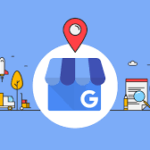Search engine marketing (SEM) is a digital marketing strategy that involves using paid advertisements to increase the visibility and traffic of a website on search engines. SEM is often confused with search engine optimization (SEO), which is the process of improving the organic ranking of a website on search engines. However, SEM and SEO are different and complementary approaches to online marketing. In this article, we will explain the basics of SEM, its benefits, and how to get started with it.
What is the Difference Between SEM and SEO?
SEM and SEO are both ways of increasing the online presence and performance of a website, but they have different goals and methods. SEO focuses on optimizing the content, structure, and technical aspects of a website to make it more relevant and user-friendly for search engines and users. SEO aims to improve the organic ranking of a website on the search engine results pages (SERPs), which are the pages that display the results for a given query. SEO is a long-term and ongoing process that requires constant monitoring and updating of the website.
SEM, on the other hand, focuses on using paid advertisements to target specific keywords and audiences on search engines. SEM aims to increase the visibility and traffic of a website on the SERPs, especially on the top and bottom sections, where the paid ads are displayed. SEM is a short-term and flexible process that allows the advertiser to control the budget, timing, and performance of the ads.
SEO and SEM are not mutually exclusive but rather complementary. A website that has a good SEO foundation can benefit from SEM by reaching more potential customers and increasing conversions. A website that uses SEM can benefit from SEO by improving the quality and relevance of the landing pages and enhancing the user experience. Therefore, a successful online marketing strategy should combine both SEO and SEM to achieve the best results.
How Does SEM Work?
SEM works by using a pay-per-click (PPC) model, which means that the advertiser only pays when a user clicks on their ad. SEM involves four main steps:
1. Choosing a Platform
The first step of SEM is to choose a platform to run the ads. The most popular and widely used platform for SEM is Google Ads, which allows the advertiser to create and manage ads on Google and its partner sites. Other platforms for SEM include Bing Ads, Yahoo Ads, and Amazon Advertising.
2. Selecting Keywords
The second step of SEM is to select the keywords that the advertiser wants to target with their ads. Keywords are the words or phrases that users type into the search engine to find what they are looking for. The advertiser should choose keywords that are relevant to their product or service, have a high search volume, and have low competition. The advertiser can use keyword research tools, such as Google Keyword Planner, to find and analyze the best keywords for their campaign.
3. Creating an Account Structure
The third step of SEM is to create an account structure that organizes the keywords and ads into different groups and categories. A good account structure can help the advertiser to manage and optimize their campaign more effectively and efficiently. The account structure consists of three levels:
- Campaign: A campaign is the highest level of the account structure, which defines the overall goal, budget, and settings of the ads. The advertiser can create multiple campaigns for different products, services, or markets.
- Ad Group: An ad group is a sub-level of the campaign, which contains a set of keywords and ads that share a common theme or purpose. The advertiser can create multiple ad groups for different variations or aspects of their product or service.
- Ad: An ad is the lowest level of the account structure, which is the actual text or image that appears on the SERPs. The advertiser can create multiple ads for each ad group and test and compare their performance.
4. Writing Ad Copies
The fourth step of SEM is to write ad copies that attract and persuade the users to click on the ads. An ad copy consists of three main elements:
- Headline: The headline is the first and most prominent part of the ad, which displays the main message or offer of the ad. The headline should be catchy, concise, and relevant to the keyword and the user’s query. The headline can have up to three parts, separated by a vertical bar, and each part can have up to 30 characters.
- Description: The description is the second part of the ad, which provides more information or details about the ad. The description should be clear, compelling, and aligned with the headline and the landing page. The description can have up to two lines, and each line can have up to 90 characters.
- URL: The URL is the third part of the ad, which displays the web address of the landing page that the user will be directed to after clicking on the ad. The URL should be short, simple, and relevant to the ad. The URL can have up to two parts, separated by a slash, and each part can have up to 15 characters.
5. Participating in Ad Auction
The fifth step of SEM is to participate in the ad auction, which is the process that determines which ads will be shown on the SERPs and in what order. The ad auction is based on two main factors:
- Bid: The bid is the amount of money that the advertiser is willing to pay for each click on their ad. The advertiser can set a maximum bid for each keyword or ad group, or use an automated bidding strategy that adjusts the bid according to the performance and goals of the campaign.
- Quality Score: The quality score is a measure of the quality and relevance of the ad, the keyword, and the landing page. The quality score is calculated by Google based on several factors, such as the click-through rate (CTR), the landing page experience, the ad relevance, and the expected impact of the ad extensions. The quality score ranges from 1 to 10, with 10 being the highest.
The ad auction uses a formula called Ad Rank to rank the ads and determine their position on the SERPs. The Ad Rank is calculated by multiplying the bid and the quality score, and adding any adjustments for the ad extensions and formats. The ad with the highest Ad Rank will be shown in the first position, followed by the ad with the second-highest Ad Rank, and so on.

What are the Benefits of SEM?
SEM can offer many benefits for the advertiser and their business, such as:
- Efficiently Build Brand Awareness: SEM can help the advertiser to increase the exposure and recognition of their brand, as their ads will appear on the top and bottom sections of the SERPs, which are the most visible and clicked areas. SEM can also help the advertiser to create a positive and trustworthy image of their brand, as their ads will be associated with the authority and credibility of the search engine.
- Target the Whole Marketing Funnel To Generate Revenue: SEM can help the advertiser target the users at different stages of the marketing funnel, from awareness to action, and guide them toward the desired outcome. SEM can help the advertiser reach the users who are actively looking for their product or service and who are more likely to convert into customers. SEM can also help the advertiser retarget the users who have visited their website or shown interest in their product or service and encourage them to revisit or complete a purchase.
- Easily Scale Up or Down: SEM can help the advertiser adjust and optimize their campaign according to their budget, goals, and performance. The advertiser can easily increase or decrease their bid, change their keywords, modify their ad copies, or pause or resume their ads at any time. The advertiser can also use the analytics and reports provided by the platform to measure and evaluate the effectiveness and return on investment (ROI) of their campaign.
- Reach Anyone You Want: SEM can help the advertiser reach a large and diverse audience on the search engine, which is one of the most popular and widely used online platforms. The advertiser can also use the targeting options and features offered by the platform to narrow down and segment their audience based on various criteria, such as location, language, device, time, demographics, interests, and behaviors. The advertiser can also use negative keywords and exclusions to filter out irrelevant or unwanted traffic and clicks.
- Make Your Brand Name Familiar: SEM can help advertisers make their brand name familiar and memorable to the users, as their ads will repeatedly appear on the SERPs for the relevant keywords and queries. SEM can also help the advertiser create a strong and consistent brand identity, as their ads will reflect their brand voice, tone, and style.
- Display Ads With Great Accuracy: SEM can help advertisers display their ads with great accuracy and relevance to the users and their search intent. The advertiser can use the keyword match types and modifiers to control how closely their keywords match the user’s query and to trigger their ads for the exact, broad, or phrase matches. The advertiser can also use the ad extensions and formats to enhance and customize their ads with additional information or features, such as callouts, site links, reviews, ratings, locations, calls, messages, and more.
- Become More Competitive and Stand Out From the Crowd: SEM can help the advertiser to become more competitive and stand out from the crowd, as their ads will occupy the prime and prominent positions on the SERPs, which can attract more attention and clicks from the users. SEM can also help the advertiser differentiate and distinguish their product or service from their competitors by highlighting their unique selling proposition (USP), value proposition, or competitive advantage.
- Better Cost-efficiency: SEM can help the advertiser to achieve better cost-efficiency and ROI, as they only pay for the clicks that their ads receive and not for the impressions or views.
How to Get Started With SEM?
To get started with SEM, the advertiser needs to follow some steps, such as:
- Set a clear and realistic goal for the campaign, such as increasing brand awareness, generating leads, or boosting sales.
- Define the target audience and the buyer persona, such as their demographics, interests, behaviors, and pain points.
- Conduct keyword research and analysis and select the most relevant and profitable keywords for the campaign.
- Create a landing page that matches the ad and the keyword and that provides a clear and compelling value proposition, a strong call to action, and a smooth user experience.
- Write an ad copy that captures the attention and interest of the user and that persuades them to click on the ad and visit the landing page.
- Choose a platform and create an account structure that organizes the keywords and ads into different campaigns and ad groups.
- Set a budget and a bid for each keyword or ad group, or use an automated bidding strategy that optimizes the bid according to the performance and goals of the campaign.
- Launch the campaign and monitor the results using the analytics and reports provided by the platform.
- Test and optimize the campaign by experimenting with different keywords, ad copies, landing pages, bids, and targeting options, and by measuring and improving the key performance indicators (KPIs), such as CTR, quality score, conversion rate, and ROI.
Recommendations
SEM is a powerful and effective digital marketing strategy that can help the advertiser to increase the visibility and traffic of their website on search engines and to achieve their online marketing goals. SEM can offer many benefits, such as efficiently building brand awareness, targeting the whole marketing funnel, easily scaling up or down, reaching anyone you want, making your brand name familiar, displaying ads with great accuracy, becoming more competitive, and achieving better cost-efficiency. To get started with SEM, the advertiser needs to set a goal, define the audience, select the keywords, create the landing page, write the ad copy, choose the platform, create the account structure, set the budget and the bid, launch the campaign, and test and optimize the campaign. By following these steps, the advertiser can create and run a successful SEM campaign that can boost their online presence and performance.





